Shuto-uke, also known as knife-hand block, is a fundamental technique in Shotokan Karate. This technique is used to defend against strikes, such as punches or strikes to the head or neck.
The technique begins with the practitioner standing in a natural stance, with their feet shoulder-width apart and their weight evenly distributed between both legs. The practitioner then raises their arm, keeping it straight and close to their body, and forms a knife-hand by bending their fingers into a tight fist and extending their thumb. The knife-hand is then brought up to the level of the practitioner's head, with the thumb facing upwards and the fist facing forward.
The practitioner then brings their arm down, striking the incoming attack with the knife-hand. It is important to note that the movement should come from the hips and not the arm, as this will generate more power and speed. The practitioner should also twist their body slightly, so that their hips face the attacker. This will provide additional power and help to maintain balance.
Once the strike has been blocked, the practitioner can then counter with a strike of their own, such as a punch or a kick. It is also important to practice the technique in both directions, as attacks can come from any angle.
It's also important to note that the knife-hand block is not only used for blocking strikes but also for striking targets such as pressure points, nerve clusters, and soft tissue areas in the opponent's body. It can also be used for trapping techniques where the practitioner uses the knife-hand to control the opponent's limb and prevent them from striking.
Shuto-uke is a versatile technique that can be used in both self-defense and competition situations. It is a fundamental technique that all Shotokan Karate practitioners should learn and practice regularly to improve their skills and ability to defend themselves.
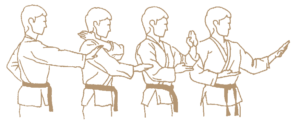
Execution of the shuto-uke block.
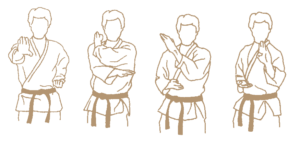
Execution of the shuto-uke block.
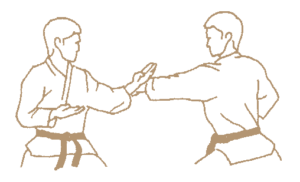
Application of the shuto-uke block.
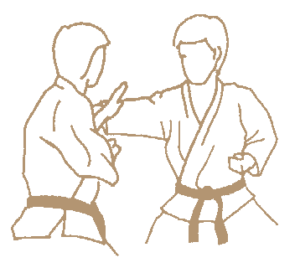
Application of the shuto-uke block.
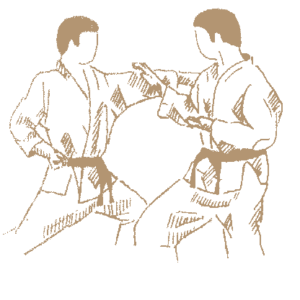
Application of the shuto-uke block.

